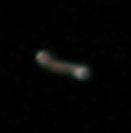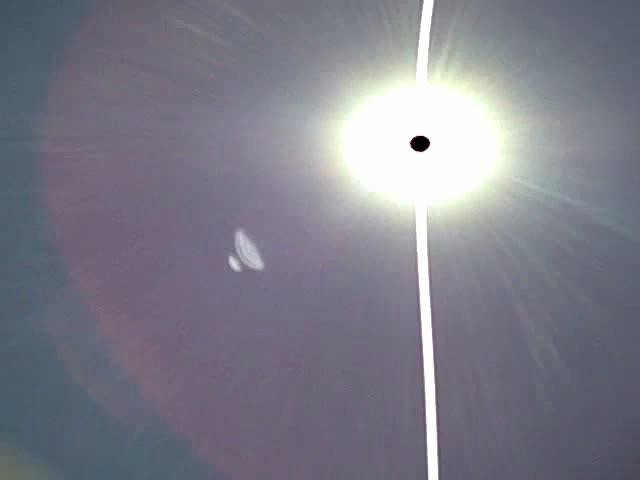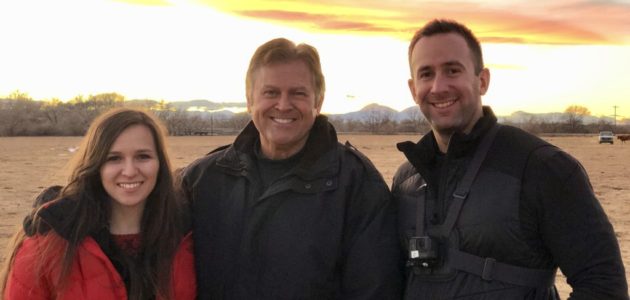Lights in the Sky
The majority of sightings UFO investigators receive are mostly lights in the sky. Using the classification system first generated by J Allen Hynek, lights in the sky would be classified as CE1.
– CE1: Close Encounters of the First Kind. Generally lights in the sky or a UFO sighted within 500 feet. This is the most common of all sightings and I’ll discuss this one further.
– CE2: Close Encounters of the Second Kind. This is a sighting in which some form of physical evidence is left behind. Cases which have marks on the ground, broken tree branches, or residue or wreckage left behind.
– CE3: Close Encounters of the Third Kind. Ok this one is cool, a visual sighting of an occupant or entity associated with the UFO sighting. Usually the standard “Grey” alien is observed, but many people have described a vast majority of different type of alien species.
– CE4: Close Encounters of the Fourth Kind. This sighting would refer to the Stan Romanek case. An abduction of a person by an alien being or race of aliens.
– CE5: Close Encounters of the Fifth Kind. Direct contact or communication with an alien being or race. Could this include government alien intervention? Did President Eisenhower have a meeting with extraterrestrials on February 20th, 1954? The story goes that President Eisenhower was secretly and quickly escorted from his family holiday in Palm Springs California to Edwards Air Force Base California to meet with an extraterrestrial race. The meeting resulted in a treaty between the alien race and the US government.
Back to “Lights in the Sky”. Some lights in the sky are basically an optical illusion.
An optical illusion: A visual perception of a real object in such a way as to misinterpret what the object actually is.
The most common illusion is when you try to concentrate on an infinite distance image in the night sky. Look at a star and try to focus on it. Your right eye will try to focus while you’re left eye tries to focus causing the speck of light to look like it’s moving slightly left to right and back again. We get these type of sightings all the time especially in the winter when Venus pops up or in the summer when Jupiter arises.
Another light in the sky which has a tendency to look like it moved is generally spotted in photographs and not at the time the photo was taken. What happens is a picture is taken of a light source in the sky, but when the image is seen, the object appears to have moved. Generally the object looks like it moved from upper left to lower right creating a blurred streak. The object is actually a stationary light source and the movement is caused by the person’s finger pushing down on the shutter button. This type of condition occurs all the time with law enforcement officers at the shooting range. If you’re right handed and you move the weapon slighting while depressing the trigger, the bullet usually goes to the lower left. Try this yourself. Hold out your hand pointing your index finger straight out and pretend to pull the trigger using your middle finger. What happens? Your index finger moves to the left. You just “missed the target”. Same thing happens when you take a picture. While taking a picture of a single spec of light from a great distance, the movement of pressing your finger down on the shutter button moves the camera slightly down to the right (if you’re right handed) causing the image to look as though it’s moved. If you want to take a picture of a stationary light in the sky which is suspected to be a UFO, then place your camera on a tripod. If your camera has a timer function, then use that and let the mechanics of the camera take the picture. You should be able to get a clean clear picture. Now if the object looks like it’s moving, then you’ve got something to investigate.
I’m still learning about digital cameras and the pictures they take. Remember a digital camera is re-creating or digitally creating the image your seeing. Depending on the size of the optical lens and the camera’s software, it will depend of what type of results you’ll get. What we’re seeing a lot on digital photos now is a bright orb looking light image with a black circle or smudge in the middle. This black smudge or circle is usually caused by the camera’s software and lack of memory to complete the image. While trying to make the rest of the picture look great, the camera’s software basically gives up with the bright light source and leaves a void in the middle. This results in a black dot or smudge in the middle of the bright flash-like looking object you shot. Now I’m not saying you’re not taking a picture of an unknown light source, what I’m saying is, “Don’t put too much thought into what’s coming out of the middle of the bright flash.” You can practice this illusion yourself by taking pictures of very bright light sources. Be careful not to damage the optics in your camera while doing this. Also watch out for lens flares. These are the crescent looking comet tail dragging creatures shooting out of the bright light source. They always look the same, the crescent side is the curvature of the lens and it’s tail is the resulting lens flare. They’re always moving away from the bright light source. Be careful looking at pictures which may have caught the sun or bright moon in the background behind some trees. A digital camera will pick up on this and try to bring the image out on the picture for you. It’s just doing it’s job trying to make your picture look great. Also, lower end “cheaper” cameras will create their own optical illusions. Remember you get what you pay for. If you’re consistently taking pictures of an unknown light source be it in the sky or in the woods, switch cameras and even switch the manufacturer. Try to re-create the unknown light source with a completely different camera. If you succeed, now you may have something unique.
I hope these little tid-bits help you in your quest while taking pictures of lights in the sky. Remember be the best skeptic while analyzing your images and try to recreate the shot if you can. Without doing this, it’s fuel for the de-bunker fires and they will attack. More on “Lights in the Sky” later. Happy Hunting!
Category: The Z-Files












